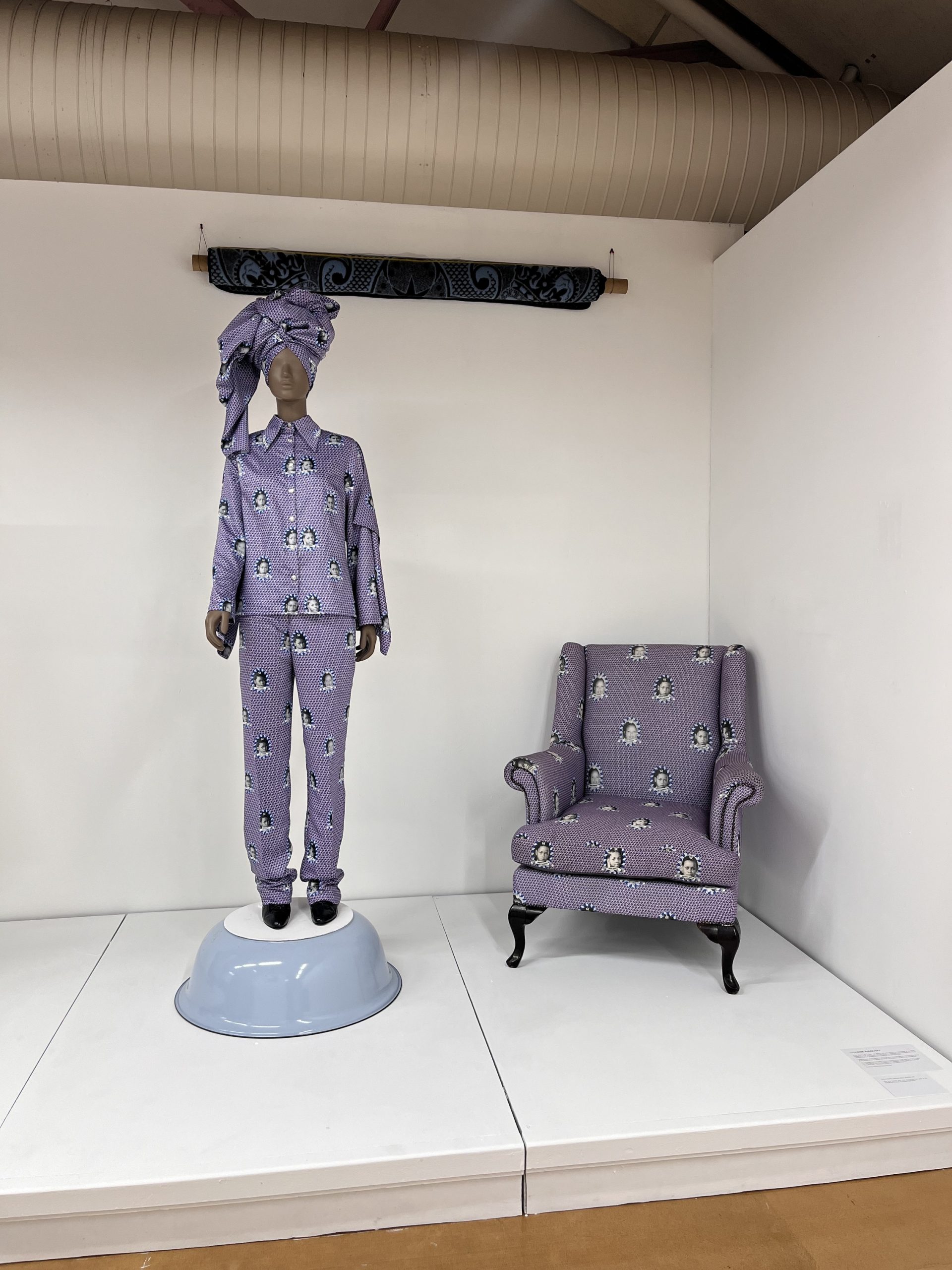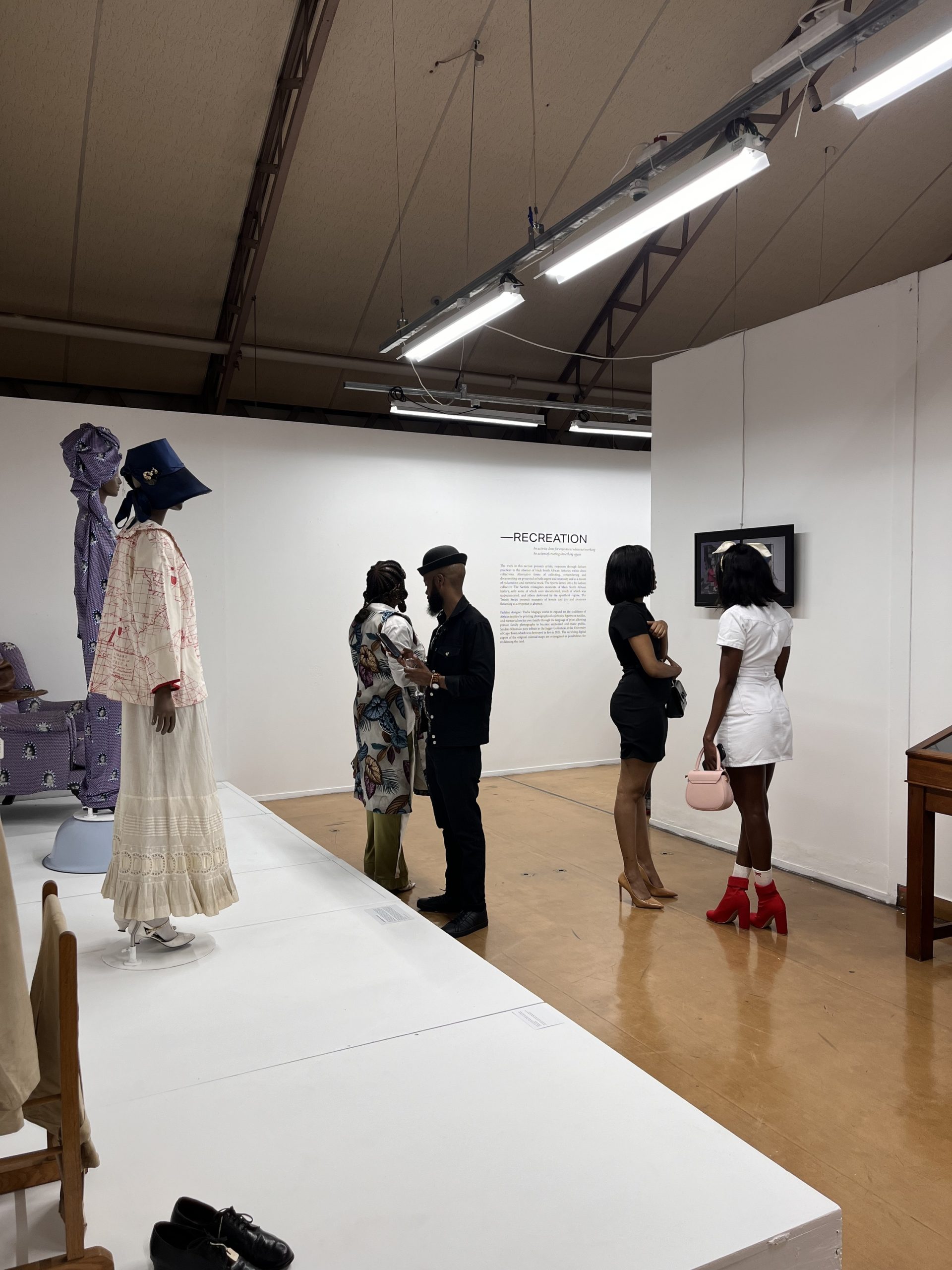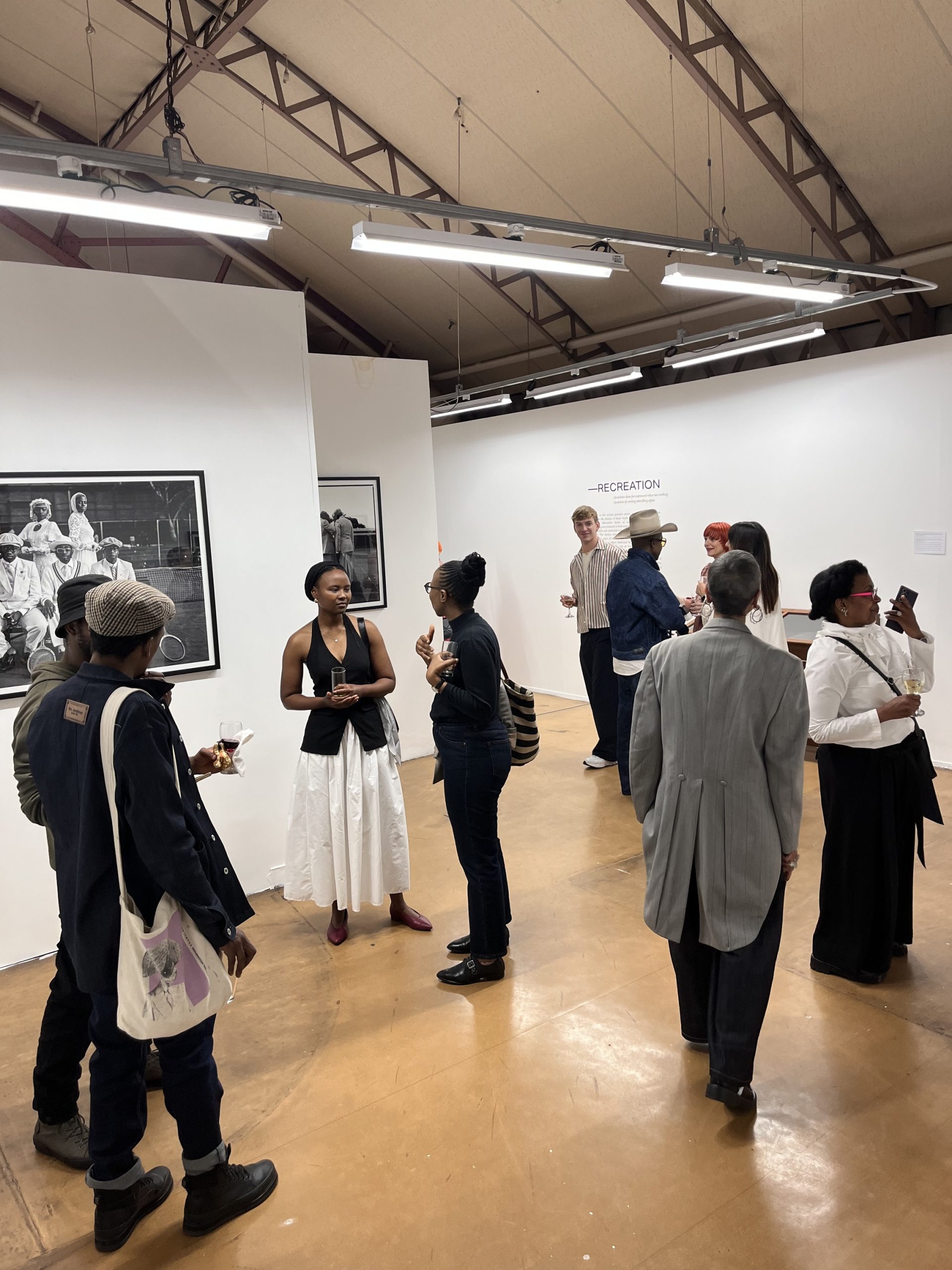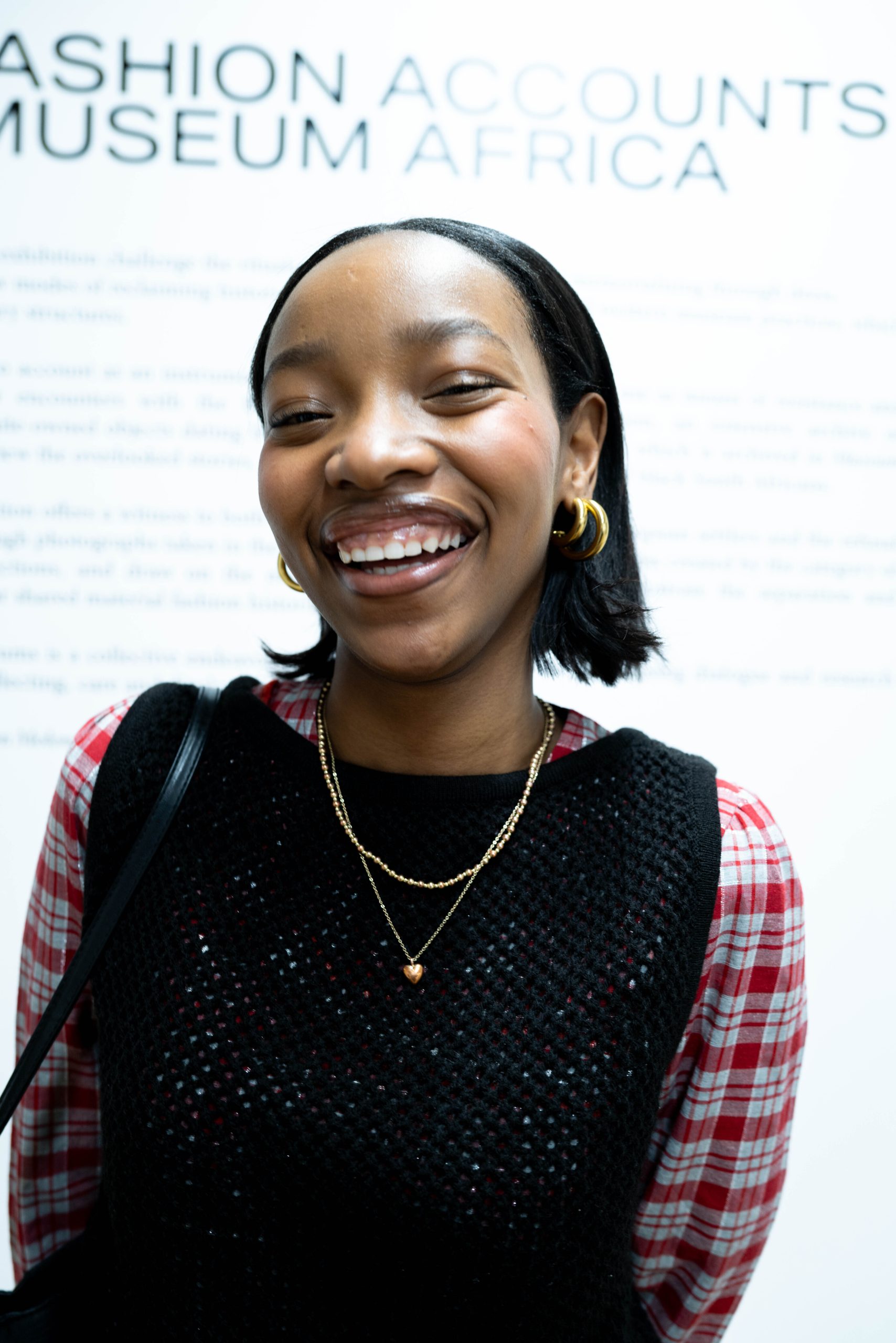Fashion Accounts, which reexamines the practices of collecting, archiving, and memorialising through dress is arguably one of the greatest triumphs of local museum work in recent years. Curated by Wanda Lephoto, Erica de Greef, and Alison Moloney, it explores memory, resistance, and preservation, featuring works by The Sartists, Mimi Duma, Thebe Magugu, and Sindiso Khumalo among others. I took it upon myself to track down one of the curators, Erica de Greef and asked pertinent questions on behalf of the fashion-loving BubblegumClub community.
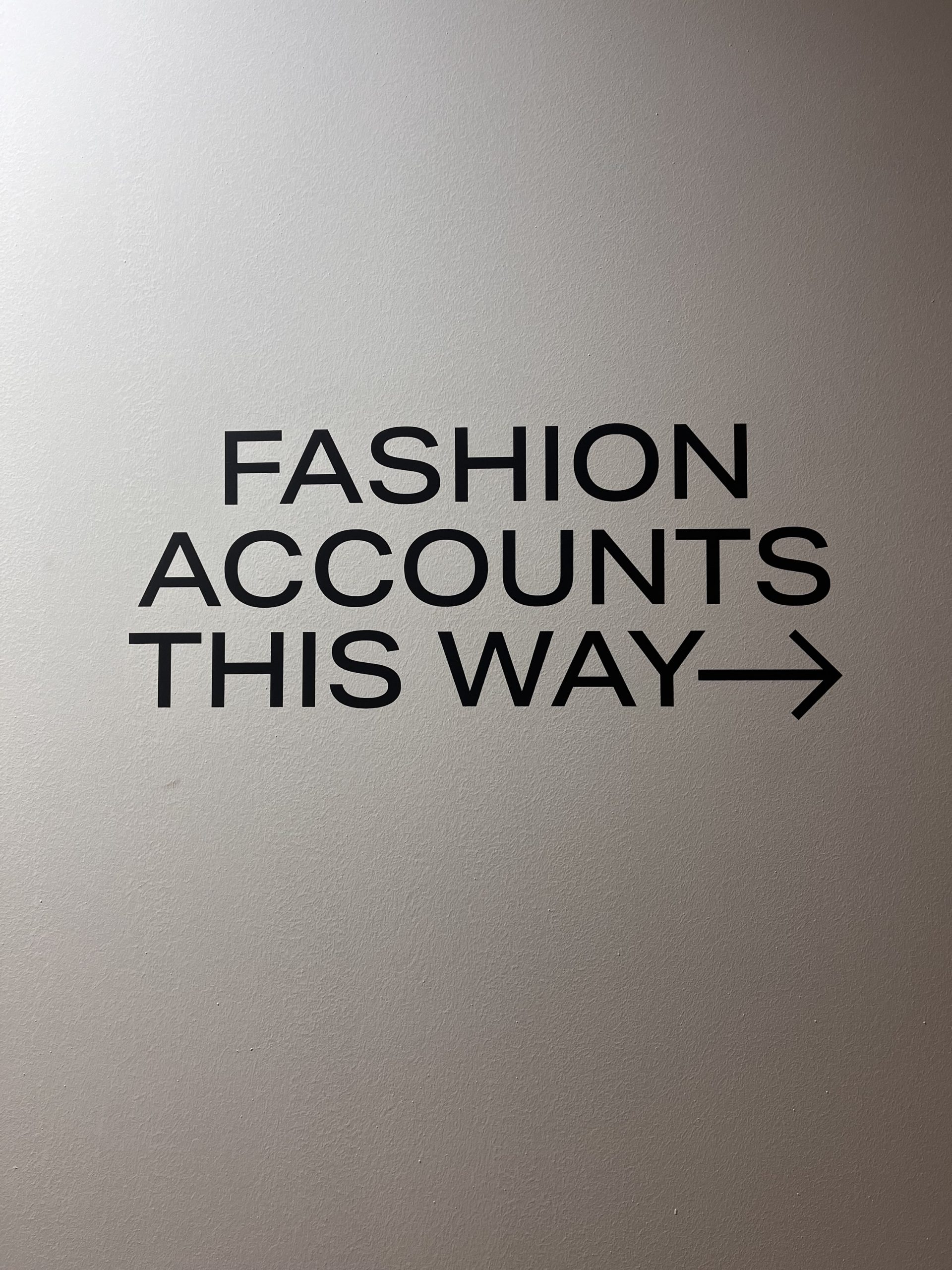
Thembeka Heidi Sincuba: What first brought you into the world of culture and fashion? What are your earliest memories that made you realise you wanted to be in this space?
Erica De Greef: Wow, that goes back a long way. I was in secondary school at the height of apartheid madness in the late 1980s. It became quite evident that the spaces starting to push against the binary of apartheid politics were those of fashion, music, and culture. A lot of activist work was happening in these scenes, where more diverse expressions were being made visible, and a different politics was being showcased.
THS: Do you feel that your family, schooling, or the environment you were in encouraged you to go in this direction?
EDG: Absolutely, yes. I think my schooling chased me away from what would have been perceived to be the more conservative or conventional route. But my family certainly played a role. As a child, we spent a lot of time visiting what were then the homelands and places outside of whiteness. So we spent a lot of time in different cultural spaces and appreciated diverse cultural backgrounds. We were often in the Eastern Cape, what was then the Transkei and Ciskei. We went to Lesotho, Mozambique, and other places like that. So just appreciating very different lived worlds.
THS: In your curatorial work, how do you balance the tension between historical trauma and celebrating Afrocentric culture and memory through fashion objects?
EDG: I think it’s such an important question. Decolonial work is about making visible other pathways to history that are not drowning in pain. The much easier route to deal with trauma is to point to the trauma. The much more difficult work is to say, well, that happens and happened, but what were the other, less visible, but equally or even more important, survival strategies? Places of love, care, or growth—the kind of shoots that would then grow. Decolonial work is also about trying to find alternative structures to hold a history. It is not all about trauma, because that can often reproduce the trauma.
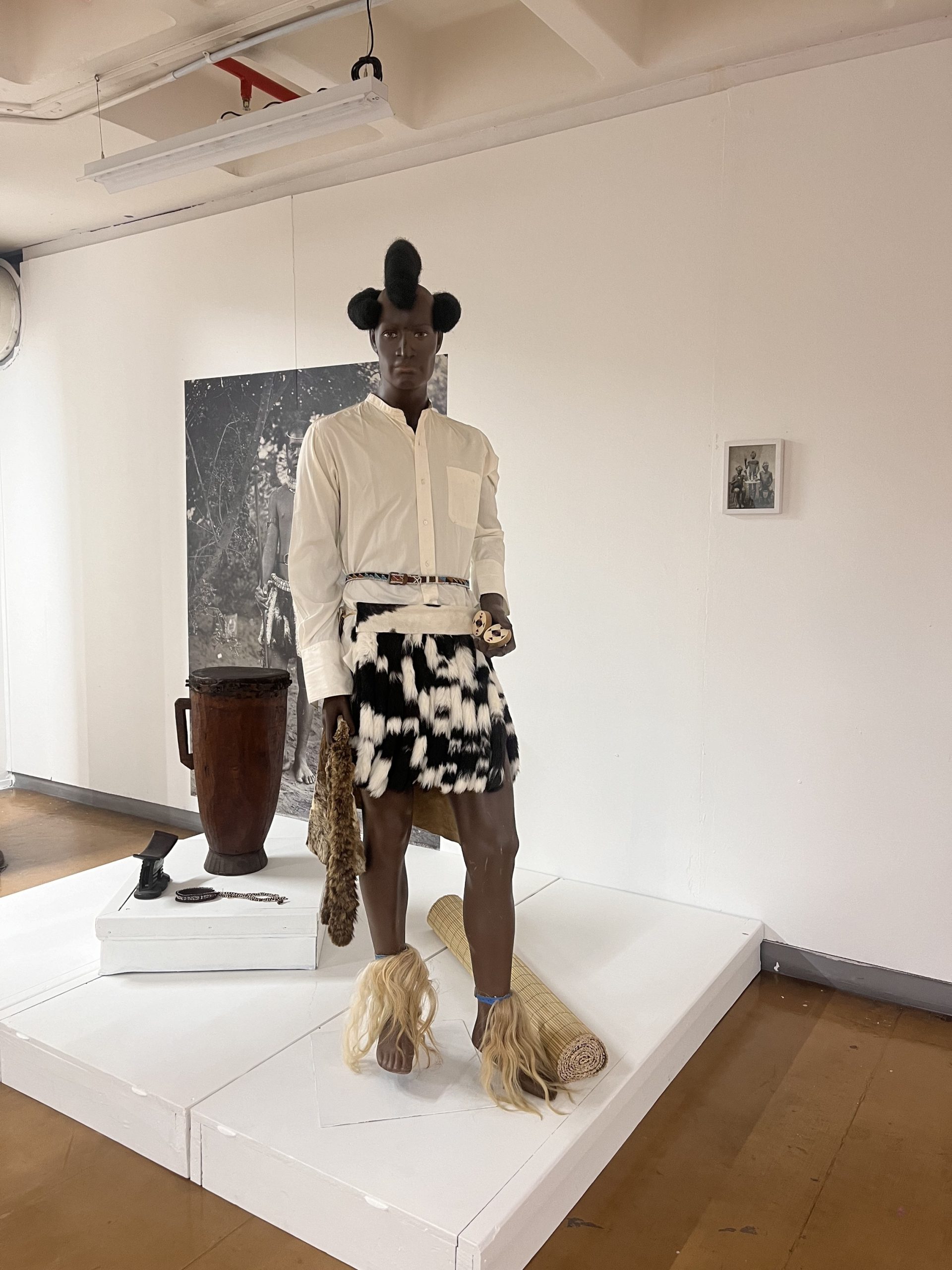
THS: But more specifically, I think museums often have a problematic relationship with ethnographic objects. When you were putting fashion accounts together, did you think about the need to disrupt traditional museum practices? How do you think you’ve managed to do that?
EDG: Fashion Accounts is a co-curated exhibition. We worked very closely, with the three co-curators—myself, Alison Maloney, a curator from London, and Wanda Lephoto, a designer and creative genius from South Africa. The three of us grappled with how not to reproduce the colonial framing and language, particularly in fashion collections. Museum Africa is not the only museum that has this binary where Western dress, associated with White South Africans, is housed in a fashion collection, while traditional dress, which would have been worn by Black South Africans, is in a separate ethnographic collection. That framing and those taxonomies rule those collections reproduce the notion that one group had fashion while the other didn’t.
We had to slice through that. One approach was to refuse some of these categorisations. So, in the Western collection, we often know the name of the wearer and even the occasion it was worn because that’s the kind of data or metadata that is required when the items enter the museum. In the ethnographic collection, we don’t know who wore them or when and where they were worn. So in our displays, we then refused that knowledge—to kind of diaggregate those power dynamics. For items in the Western collection, our captions stated, “The wearer and photographer are known to us and available in the records.” For the ethnographic objects, we wrote, “The wearer is not known to us.”

THS: Working with designers like Wanda Lephoto and artists like The Sartists and Sindiso Khumalo may be a way to engage with what history doesn’t necessarily give us. Was this something you considered as you approached collaborations with contemporary practitioners?
EDG: Absolutely! So, I don’t know if you know the work of Saidiya Hartman.
THS: Yes.
EDG: Okay, speculative fiction—so thinking through, what does it mean to imagine into those gaps—there are so many gaps. Black South Africans’ fashion was not collected in museums. It was distributed within families. So like, Nelson Mandela or Winnie Mandela’s garments, or even Dolly Rathebe’s dresses—where did they go? They did not enter into museum collections. They circulated in very different kinds of ways. So there are huge gaps in museum collections in terms of Black South African fashion histories.
Then there are also major gaps in thinking about tradition in terms of fashion—its fluidity, nuances, and mutability. Working with designers like Thebe, Sindiso, Wanda, and so many others, these creatives bring historical and cultural conversations back into circulation through their work. Through their creative practice—design, art, or music—as archival practices in a way. They keep history in view, in the same way that a museum does. So seeing design as an archival practice—not all design, but some designers, musicians, and creatives are addressing those historical erasures through their creative practice.
THS: Alongside the gaps history has left us with, there are also those created by the present. I’m curious about the challenges you encountered working with Museum Africa specifically, or museums in general. What constraints influenced what we ended up seeing?
EDG: Bureaucracy! Very very slow turnaround in terms of official paperwork that supported the back end of our exhibition. That delay affected the agreement with the funder, which delayed the grant’s first tranche. This then impacted how much time we had, which compromised many questions around time. It affected practicalities like when we could commission the artists or when we could start the project or begin painting the walls. We had about two weeks before the exhibition opened to release the invitation from the museum’s authorisation.
More importantly, this project with Museum Africa was specific to Museum Africa. We were fortunate to have certain freedoms, which would have not been available in stricter museum environments. Even though we received some funding from the French Embassy, it was small. We tried to work modestly within the museum’s potential capacities. So we reused things we found in their storerooms, in terms of display items and cabinets, rather than spending an enormous amount of money.
This is a pathway for museums to start to imagine new ways of engaging with their fashion, ethnographic, and photographic collections. And we would like other museums to follow this pattern—reengaging their collections as part of an internal museum interdisciplinarity.
That’s the answer to your question. The other thing is—the one was about the bureaucracy of the museum at large, but the other, within the museum, we forced those dialogues between those disciplines. So even though they all belong in one museum, the ethnographic collection did not speak to the fashion collection, did not speak to the photographic collection; did not speak to the Bensusan collection. We brought them all into dialogue.
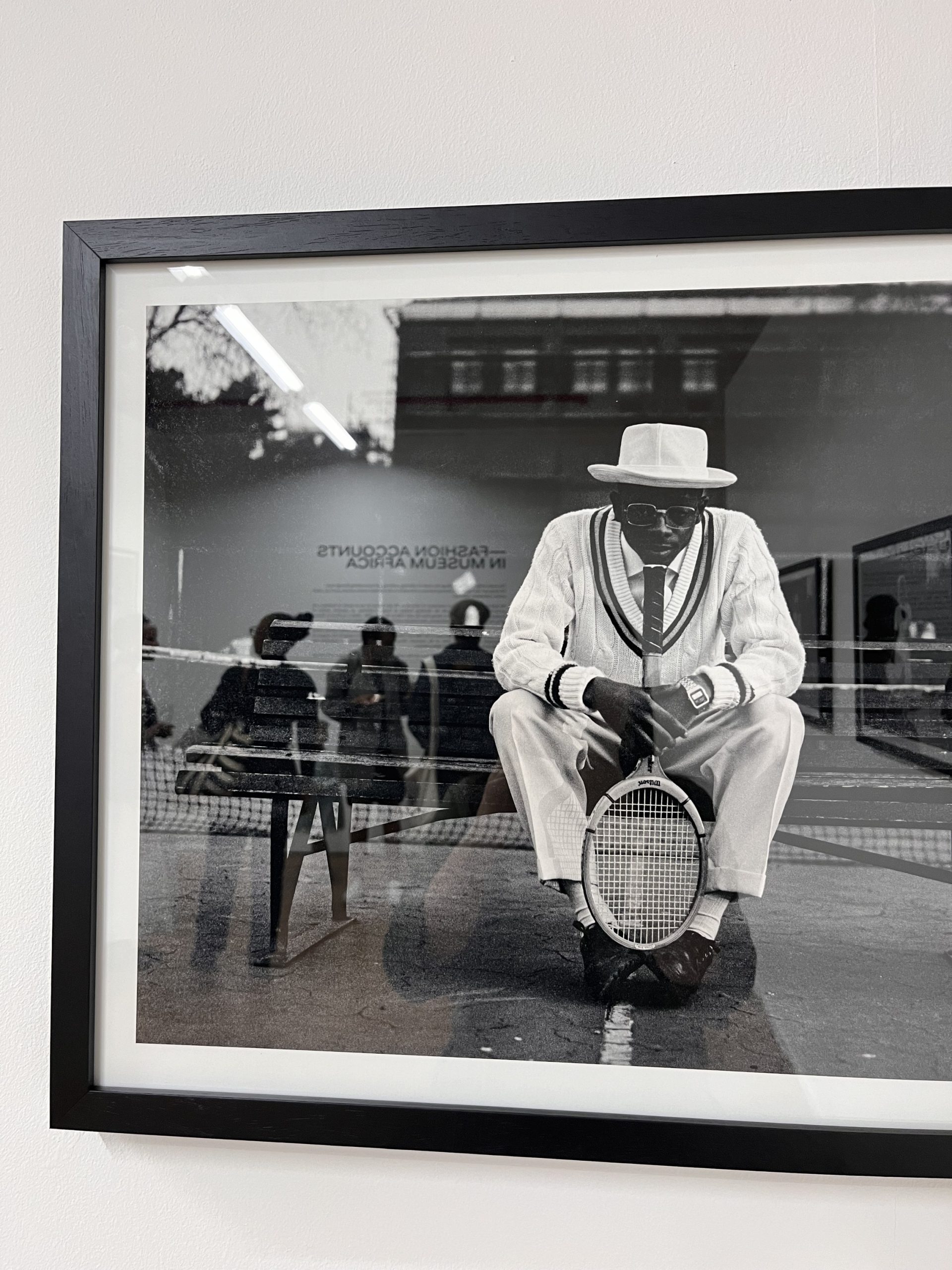
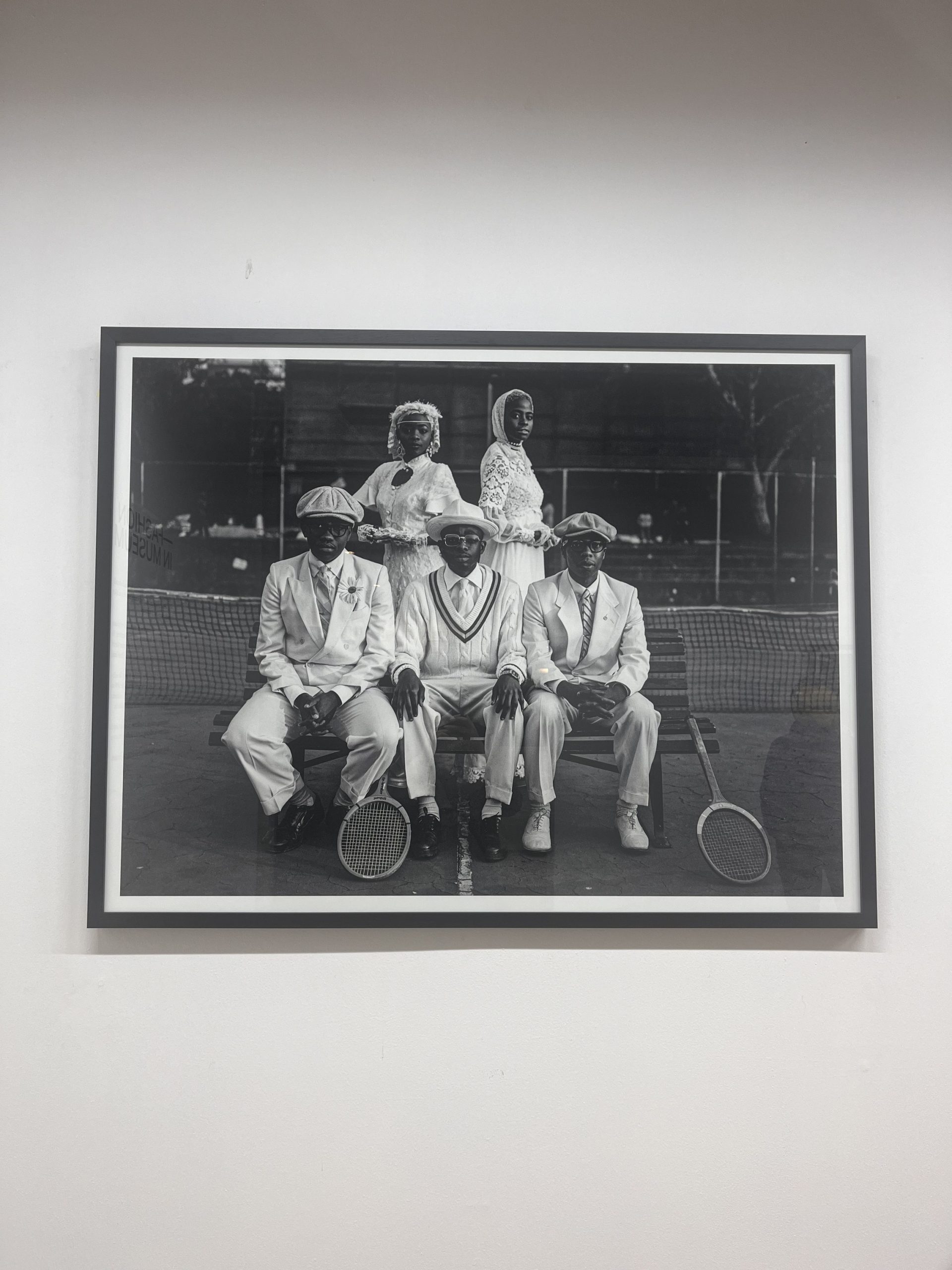
THS: Your PhD thesis, Sartorial Disruptions, was about critical fashion studies, and this project is one manifestation of that research. How do you think this exhibition has moved the idea of fashion as a site of resistance forward, and where do you see this work going after this?
EDG: For the collectives, like The Sartists, this was the first time that the Tennis series was shown in a South African museum. And the Tennis series was created 10 years ago. It’s been shown in Brighton, the UK, Amsterdam, and New York, but not here. So, to be taken seriously—
Even Thebe Magugu—when I was with Zeitz for that 21-year exhibition, I managed to include 21 designers there. So I managed to get Thebe into the Zeitz Museum. But again, Thebe has shown internationally, but in terms of local purchase or showcasing, or design being taken seriously as a form of inquiry, critique, or voice—it hasn’t been as prominent. Going forward, that’s one of the major shifts we want to address: ensuring South African designers are acknowledged at home.
THS: What advice would you give to someone dreaming of a fashion career, who sees this exhibition as inspiration?
EDG: What’s important is that we begin to reference fashion from a South African perspective and stop looking to the global north—Paris, London, New York. Instead, we should focus on South African fashion designers historically and draw on South African cultural references in a different way. I think this exhibition hopes to shift how South African design and fashion are positioned within a hierarchy. So often, textbooks, museums, and public perception treat fashion from elsewhere as superior. We want to change that, and if this exhibition can contribute to that shift, I would be delighted.
THS: One last question—was there something in this process that surprised you? Something that made you laugh, confused you, or was unexpected?
EDG: Absolutely! In 2009, I curated an exhibition at Museum Africa with SA Fashion Week. That was during a kind of heyday in Johannesburg’s Newtown area. Fashion Week had a huge crowd. What surprised me this time was that on a Thursday evening in mid-November, we had over 200 people at the opening. That completely surprised me. But I think it’s pointing to something that we’re ready to address. We’re speaking back to, and there’s a very powerful voice that is current, that can address some of these traumas, overcome some of these biases, and speak in dialogue. For me, the surprise was realising we’re ready to decolonise museums.
And it’s fashion that’s doing this. That’s what’s so powerful. Fashion is so often perceived as lacking the same agency as fine arts or music, but this is a conversation. I think the opening was a success because of the conversations that were had, and that can continue with a new language.
Fashion Accounts at Museum Africa in Newtown is nothing short of a truly inspired exploration of colonial legacies in fashion collections, amplifying often overlooked Afrocentric narratives. On top of this, the exhibition, featuring new commissions and historic works, breathes life into the often overlooked and somewhat dusty museum in the old heart of town. Open from November 15, 2024, to February 28, 2025, with free admission, this exhibition simply cannot be missed, offering visitors new opportunities to engage with a reimagined view of SA’s fashion histories.
Museum Africa opening hours: Tuesday to Sunday, 09:00 – 17:00.
